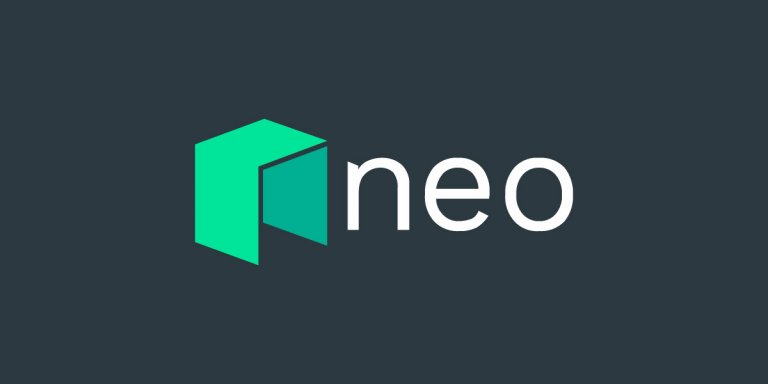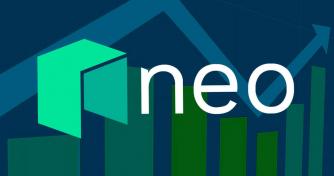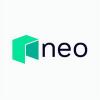 NEO’s strategy of ‘pragmatic’ centralization
NEO’s strategy of ‘pragmatic’ centralization 
Cover art/illustration via CryptoSlate. Image includes combined content which may include AI-generated content.
One of NEO’s competitive advantages over Bitcoin and Ethereum is its ‘pragmatic’ approach toward centralization, argues founder Da Hongfei.
Leveraging centralization
One of NEO’s main criticisms is its centralization, both politically and architecturally.
Right now, the NEO Foundation and its related organizations—for-profit NEO Global Capital and non-profit NEO Global Development—hold enormous power. Moreover, final decision-making is largely up to co-founders Da Hongfei and Erik Zhang, and executive John deVadoss.
Since inception, NEO has leaned into centralization. As said in the whitepaper, founding members and their team are “responsible for strategic decision-making, technical decision-making, and specific implementations. In other words, they have control.
This is deliberate. From the beginning, NEO has planned to start as a centralized protocol and decentralize over time. In an interview with CryptoSlate, Da Hongfei said:
“To mitigate those centralized disadvantages with NEO, we have a very clear plan to shift from the current more centralized to a more decentralized model in the future. It will be beneficial to keep relatively more centralized for efficiency. NEO is not the first blockchain project in the world. We’re still catching up with leading projects.”
The leading projects Hongfei is referring to? The two leading cryptocurrencies by market capitalization:
“If we work the same way as Bitcoin or Ethereum we will be less efficient compared to today’s development. We have seen some leading projects already stall in terms of their technological advancement.”
A different pace of development
And he isn’t wrong. The rate of Bitcoin development is painfully slow. Soft fork upgrades like SegWit, which increases the number of transactions the Bitcoin network can handle, only recently achieved 50 percent uptake. This is for a popular initiative activated in August 2017.
Although the pace of Ethereum development is comparatively faster, the speed is still glacial compared to the conventional software world. Though, these timeframes are expected given the necessary level of coordination and the economic stakes involved.
As a result, critical upgrades like ETH 2.0 have been on the horizon for over two years. This poses a risk to Ethereum as other blockchains gain momentum.
In contrast, NEO’s greater level of centralization has allowed it to implement major blockchain upgrades relatively quickly. The control the founders have over funding, development, and the network’s layout is an advantage, and a risk.
Funding the NEO ecosystem
The NEO Foundation has control of an impressive treasury. In the latest unaudited financial statements the organization reported assets totaling $871 million in June 2019. The bulk of these assets are in NEO tokens.
NEO-related entities own a total of 43.7 million NEO tokens, worth $756 million at an assessed value of $17.3 per token.
To date, the NEO Foundation has spent 5.85 million NEO to fund development, stimulate its ecosystem, and invest in other blockchain projects. These expenditures are worth roughly $100 million today at the price NEO Foundation assessed for its tokens.
In current assets, the organization has $78.6 million in cryptocurrencies and fiat. In long term assets the organization owns investment and startup equity worth $46.7 million.
As the single-largest token holder, NEO Foundation and its related entities have a lot of assets at its disposal. For reference, the Ethereum Foundation controls a treasury worth $130 million in Ether in addition to its cash assets on hand.
Comparison to a massive corporation
To better conceptualize these huge sums here’s an S&P 500 corporation for comparison. TripAdvisor was arbitrarily selected as one of the smallest corporations on the list with a market capitalization of $5.3 billion.
The corporation had $901 million in cash and cash equivalents, and a total of $1.27 billion in current assets at its disposal according to its latest quarterly balance sheet—amounts comparable to NEO’s treasury.
The assets NEO has at its disposal could accelerate the development of the project and help Da Hongfei and his partners build a robust ecosystem. But, token-holders run the risk of dilution (getting dumped on) if price growth is outstripped by increases in supply. As such, it’s critical investors and stakeholders hold the Foundation accountable for its spending.
Development around NEO
Another part of the organization’s strategy is funding core protocol and tooling development around the NEO blockchain platform.
The NEO Foundation once had a relatively small group of globally distributed engineers. But, midway last year the project decided to hire dedicated engineers, marketers, and business developers, Da Hongfei told CryptoSlate. These employees complement the existing open-source community, he said.
At the beginning of 2019, NEO set up a Seattle-based development operation, NGD Seattle, to expand the project’s access to talent. Microsoft veteran John deVadoss was brought-on to head the initiative. NGD Seattle currently has four lead developers based out of Seattle with three to four other remote developers/designers working under each of them, deVadoss told CryptoSlate.
To date, 59 percent of NEO’s expenditures have gone toward core developer salaries for expanding the capabilities of the protocol. This makes sense, given NEO’s desire to become the “most developer-friendly blockchain.”
The three major capability expansions NEO is working on include NeoFS, native file sharing—NeoID, native identity—and built-in oracles.
Furthermore, NEO has continued its singular focus on developer tools. Everything from preconfigured toolkits, frameworks, libraries, debuggers, chain explorers, and detailed guidance to simplify and accelerate smart contract development.
Although there is some open-source protocol development happening on protocol, that work is minor compared to the development funded directly or indirectly by the NEO Foundation.
Control over the network
At the moment, NEO MainNet still seven consensus nodes. Two of these nodes are operated by approved third-parties and the other five are operated by the NEO Foundation directly.
The NEO Foundation reviews all proposals and selects candidates based on their “qualifications and potential contributions to the NEO ecosystem.” Successful applicants will then be voted in as a consensus node on the NEO TestNet.
Given the Foundation’s ownership of 43.7 percent of the token supply elections on the TestNet are not usually contested.
Given these criteria, participating in consensus on the NEO blockchain is permissioned. Though, the NEO Foundation does claim it will further “decentralize” its network. But, the Foundation will also be highly-involved in selecting which third-parties are trustworthy to run these nodes, again raising decentralization questions.
Questions raised: NEO as an investment
Given NEO’s dominant position in its ecosystem, investors and stakeholders are essentially trusting that the NEO Foundation will continue to act in good faith and stewardship.
Unlike an equity stake in a company, tokens confer limited rights to investors in the decisions and cash flows related to a project. Token-holders are practically at the mercy of the issuers.
Blockchain companies will claim that their interests are aligned with those of investors: ‘a higher token price means their holdings are worth more, too!’ This isn’t the whole picture, though.
Most blockchain projects own the majority of tokens. These tokens are illiquid, and if sold in large quantities would cause the price to plummet. Given these circumstances, for example, if the NEO Foundation could sell its entire treasury while modestly pushing down NEO’s price, then that would be a success for the company but a loss for investors.
In general, altcoin investors run the risk that issuers will squander or mismanage their tokens. Examples are abundant.
Out of the five biggest ICOs by funds raised, three totally mismanaged the money they raised: TaTaTu, Dragon, and HDAC raised a total of $1.15 billion. All three wasted these investments on ill-conceived plans, like the floating Dragon casino in Macau. On average, investors lost over 90 percent of their investment on these projects.
That said, Da Hongfei has made verbal commitments to token-holders that they will manage their funds judiciously.
“The principle for the NEO Foundation is to spend its tokens. For every one token we spend it needs to have a higher return value than one token. It has to add value to the community, to the project.”
Right now, four people control the majority of the funds distributed by NEO affiliate entities: Da Hongfei, Erik Zhang, John deVadoss, and director of ecosystem growth John Wang. That gives these people tremendous power. Considering these factors, should investors trust that the NEO Foundation will keep making good decisions?
Question raised: token distribution
Another major question centers around the distribution of the NEO token. NEO plans to make its token the base-unit for decision making on its blockchain. As such, it’s important that the token is distributed in a way that’s equitable, fair, and transparent to allow healthy governance to develop.
Early on, proof-of-work protocols like Bitcoin, Ethereum, and Litecoin solved this issue through (relatively) decentralized mining. Early on, access to equipment was spread uniformly and margins were large enough that anyone could participate profitably. By tying a real-world cost—electricity and hardware depreciation—to token acquisition it gave tokens a baseline value and acted as a fair and permisionessless way to distribute tokens to interested participants.
Right now, the NEO Foundation has control over how a near-majority of tokens are distributed. Obviously, loyalists and supporters will be the first ones to get funding, presenting risks of corruption and rent-seeking if left unchecked.
How does the NEO Foundation intend to distribute tokens in ways that are fair and benefit the longevity of the protocol?
Question raised: censorship resistance
Centralization of the NEO blockchain raises serious questions around censorship resilience.
Charlie Lee has expressed that censorship resistance is one of the primary advantages of decentralization. An attacker would find it difficult to undermine a project like Bitcoin or Litecoin because risk is distributed among thousands of stakeholders. One of the earliest successes Lee described for Bitcoin was its ability to circumvent U.S. online gambling restrictions because it has no single point of control
In contrast, if the Communist Party of China put pressure on Da Hongfei to stop gambling on the NEO platform would he have to capitulate? Whether NEO could survive external pressure on its executives or nodes is still uncertain.
This may seem like an outlandish scenario. But, the biggest advantage of decentralized blockchains are their ability to circumvent arbitrary regulations.
“Permissionless innovation is extremely important. Satoshi Nakamoto could have never thought about how he impacted today’s blockchain ecosystem,” said Da Hongfei. How he fostered and ignited the revolution, the movement, and built something that is permissionless, open-sourced… I do think permissionless innovation will be the key that will advance the blockchain industry.”
But, so far NEO seems squarely permissioned. If NEO isn’t sufficiently decentralized to resist censorship then what makes it competitive relative to incumbents? High performance is easily achievable on centralized systems, so for NEO to remain competitive it needs to continue making strides toward decentralization.
And it plans to make these strides. NEO’s decentralization efforts are scheduled to pick up after NEO3 is launched, tentatively scheduled for Q2 2020.
A strategy of centralization
In two separate interview with CryptoSlate, Da Hongfei has iterated that centralization is a key part of NEO’s strategy. Unlike protocols like Bitcoin and Ethereum, which are encumbered by unwieldy governance and a painfully slow pace of development, NEO can remain nimble and use this advantage to “catch up.”
“Bitcoin has its merits: decentralized, censorship resistant. NEO is quite different from Bitcoin. We’re not trying to invent a new asset class,” said Da Hongfei in a September interview. “NEO is not a digital peer-to-peer cash system. NEO is an open network for digital assets. To achieve that goal, we need to have different consensus mechanisms and a different technological design.”
…
“I also think variety is a good thing. We already have Bitcoin, Ethereum, their approach of governance, we should allow different governance model and see who will win out.”
But, when asked on the specifics on NEO’s plans to decentralize, Da Hongfei didn’t have a concrete answer.
Right now, NEO is making steps toward delegating more of its nodes to screened organizations and spending more of its treasury, saying such expenditures “diminish” its influence over the voting process (since they hold fewer tokens).
As Da Hongfei has said repeatedly, decentralization on NEO will be a slow process:
“We have already explained to the NEO community that it will take far more than a few months or weeks to completely realize decentralization, actually it will take several years.”
But, when asked what his plans for decentralization were five years from now, he responded:
“I think it will be very difficult to think five years into the future. We don’t have a specific plan. I know that [decentralization] is what will happen, and I’m completely okay with that.”
But, mirroring concerns from U.S. Congress, if Libra defers its plan for decentralization until five years into the future, what is to say they will actually give up power? And, given the stakes for what NEO is trying to accomplish, the same question holds true.
Now it’s time to see whether NEO will refocus its efforts on decentralization following the launch of NEO3.
Credit to Dylan Grabowksi, editor at NEO News Today, for feedback and counterarguments.






















































































































